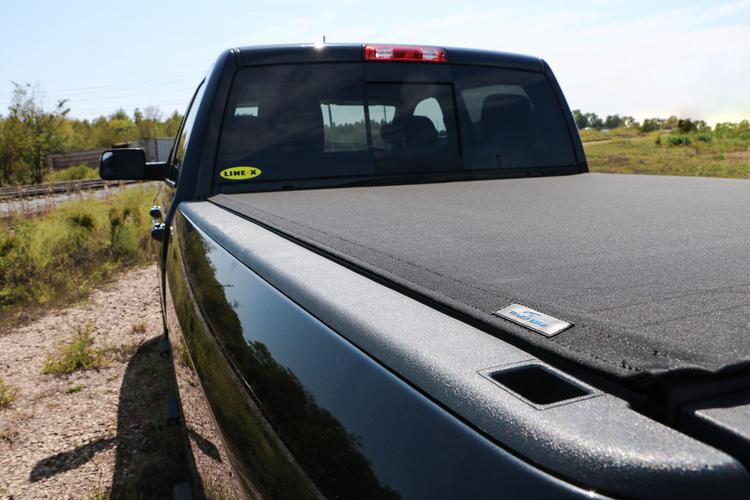If you’ve never driven a moving truck, you might feel a bit intimidated by the idea. However, it’s easier than you may think. Like anything else on moving day, you’ll do fine as long as you plan ahead and do your research. Below are some things to know about driving a
U-Haul truck
:
Reserving
After deciding
which moving truck is right for you
you’ll want to get behind the wheel as fast as possible. Using
U-Haul Truck Share,
a 24/7 self-service program, you can pick up and drop off your moving truck without even having to speak to a representative. Here’s more on how it works:
Before Driving
Before you drive away in your U-Haul truck, be sure everything is loaded properly. The safest way to load is with all of your heavy items, such as appliances and large furniture, in front of the truck (closest to the cab). For a more detailed guide about how to load your moving truck, click
here
. You’ll also want to adjust your mirrors as needed, and familiarize yourself with the vehicle controls so you aren’t trying to figure them out while driving. Be sure you understand how to operate the transmission shift and parking brake, as well as the headlights and windshield wipers. Last but not least, don’t forget to fasten your seat belt!
On the Road
There are many variables involved when driving any vehicle, especially when you’re traveling a long distance. Here are some tips for driving and handling certain situations.
General Driving Tips
Slow down.
U-Haul trucks are heavy vehicles, especially while they’re fully loaded. This means it will take you longer to stop than it would in a regular car or truck, so be cautious and slow down early. Allow at least 4 seconds between you and the vehicle in front of you. If you aren’t sure how to calculate this, start counting when the vehicle in front of you passes a fixed object. If the front of your vehicle reaches that object before the end of 4 seconds, you need to increase your distance. Kick that up to 5 seconds when driving in adverse weather, such as rain, snow or fog.
Pass with caution.
Because the truck is longer than an average vehicle, you’ll need more time and distance to pass. Be patient and don’t attempt to pass another vehicle if it’s a close call. Also, don’t pass on hills or curves.
Be alert
. Never drive if you feel tired or fatigued, and don’t use distracting items such as cell phones while you’re driving.
Handling Terrain
It’s important to be cautious while driving a moving truck, especially on certain terrains like hills and sharp corners. Here are some tips for handling each type:
Hills:
Shift into lower gears to prevent the truck from jerking due to engine lugging when going uphill. This will improve your truck’s gas mileage and prevent engine overheating.
BEFORE
going downhill, slow down and shift the transmission into a lower gear, let off the gas pedal and allow the engine to help you control your speed.
DO NOT RIDE BRAKES
on downgrade
Road shoulders:
If your truck begins to go off of the paved roadway, don’t panic and don’t turn the wheel sharply or apply the brakes. Let off of the gas pedal and slow down below 25 miles per hour, then gradually make your way back onto the road. Be sure to watch for traffic and allow yourself some time to get back over.
Sharp corners:
Do your best to avoid turning too sharp at corners, specifically in gas stations and parking lots. Because the truck is long, its rear will track inside where you originally turned and may sideswipe a vehicle or object. To turn successfully, drive slightly past the corner before turning or turn wider than you would in a car.
Steep driveways:
When driving on steep driveways or angled incline transitions, the rear bumper may drag or get stuck, particularly after loading. The parking brake also may not hold on excessively steep inclines. Avoid driving or parking on steep inclines, park in an alternate location.
Disturbances/Emergencies
A disturbance is improper handling, oversteering or other deviation of the truck from its intended path, which can be caused by one or more things (improper loading, steering inputs, excessive speed, crosswinds, passing vehicles, rough roads, tire blowout, trailer sway or whipping, etc.).
If a disturbance occurs, do NOT:
Steer or brake—let off the gas pedal to slow down

Speed up
However, DO:
Remain calm
Hold the steering wheel in a straight-ahead position
Pull off the roadway and get all occupants out of the truck
Check that cargo is secure and tires are properly inflated
Make sure tires are in good shape and all lug nuts are tight
Driving Checklist
There is a lot going on during the moving day, so here is a quick checklist you can use at each stop to ensure safe travel:
Backing and loading
Check behind the truck for pedestrians and obstructions
Secure load in the cargo area
Close and securely latch cargo door
At Stops
Firmly set parking brake
Shift transmission firmly into park and turn the engine off
Check connections if towing a trailer
Check tire condition
Check that all lights are working
Remove keys and lock the truck
As long as you err on the side of caution and keep these tips in mind, you’ll be successful in driving a U-Haul truck!
Driving Tips
,
Moving
,
Moving Trucks
driving
,
moving
,
Planning
,
planning move
,
safety
,
truck
,
U-Haul




